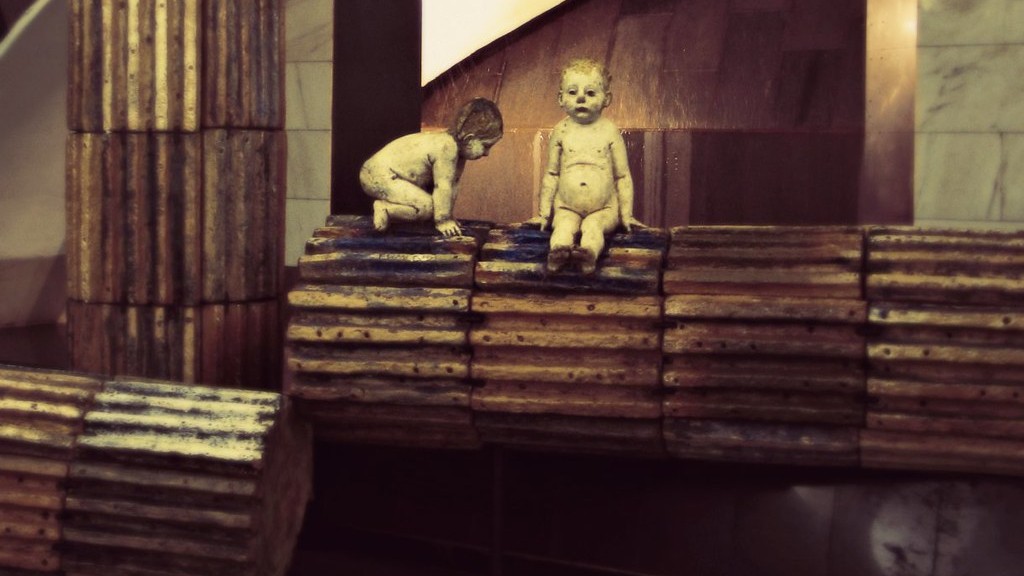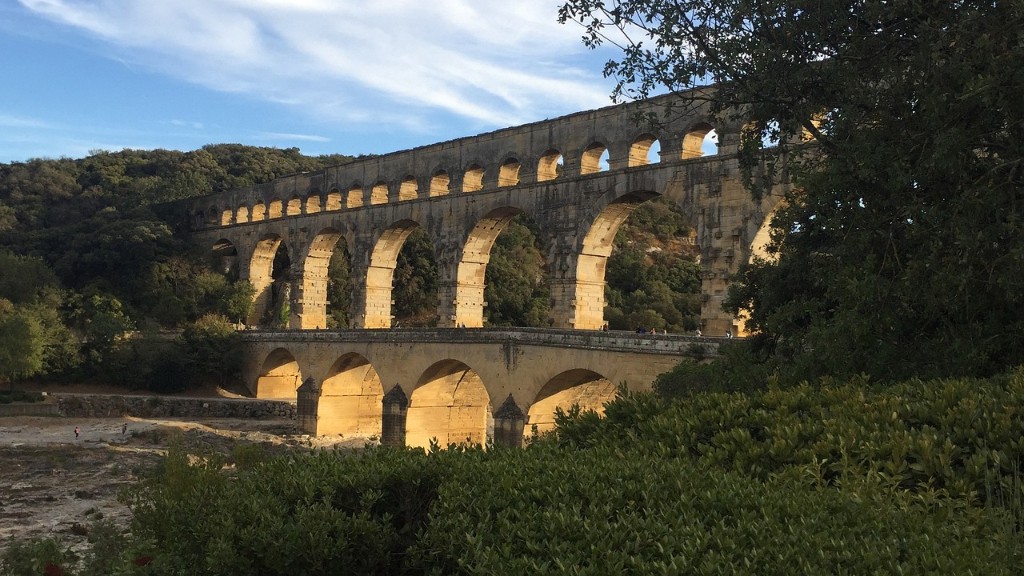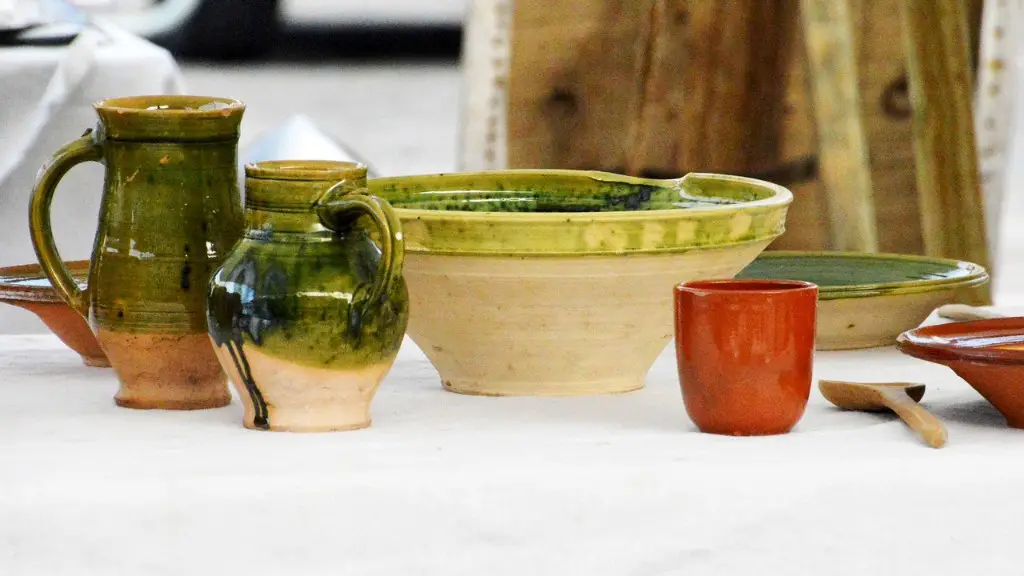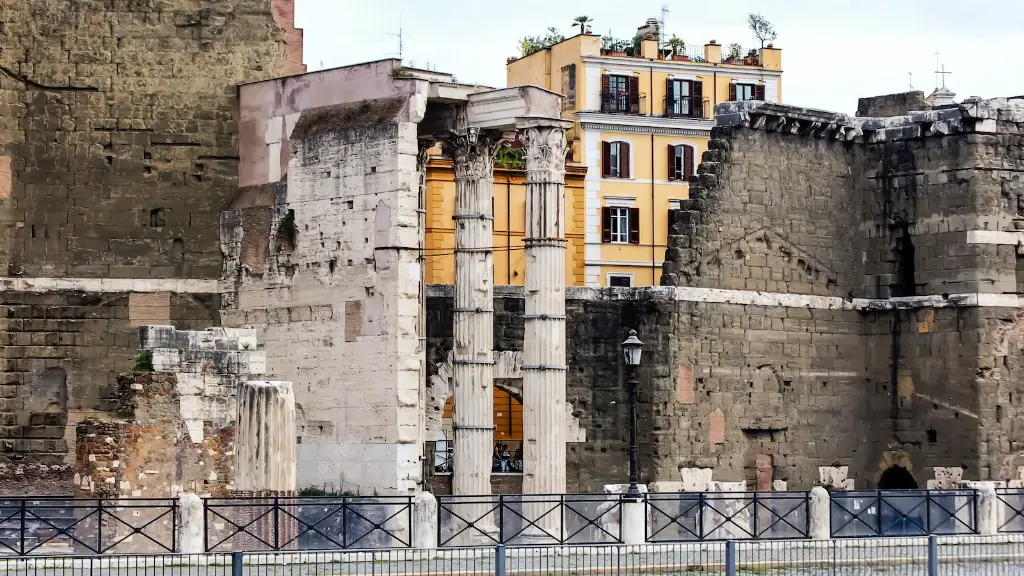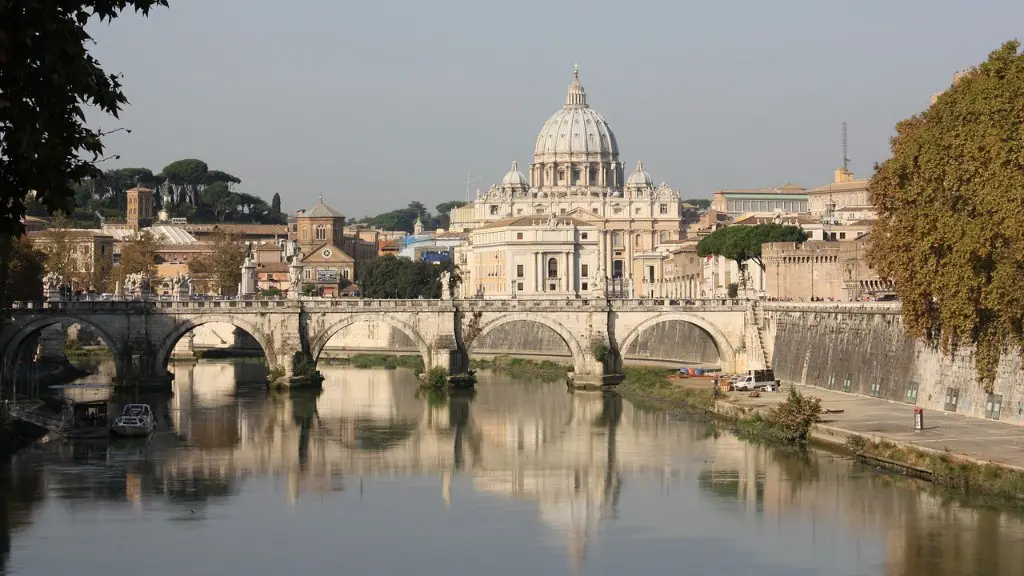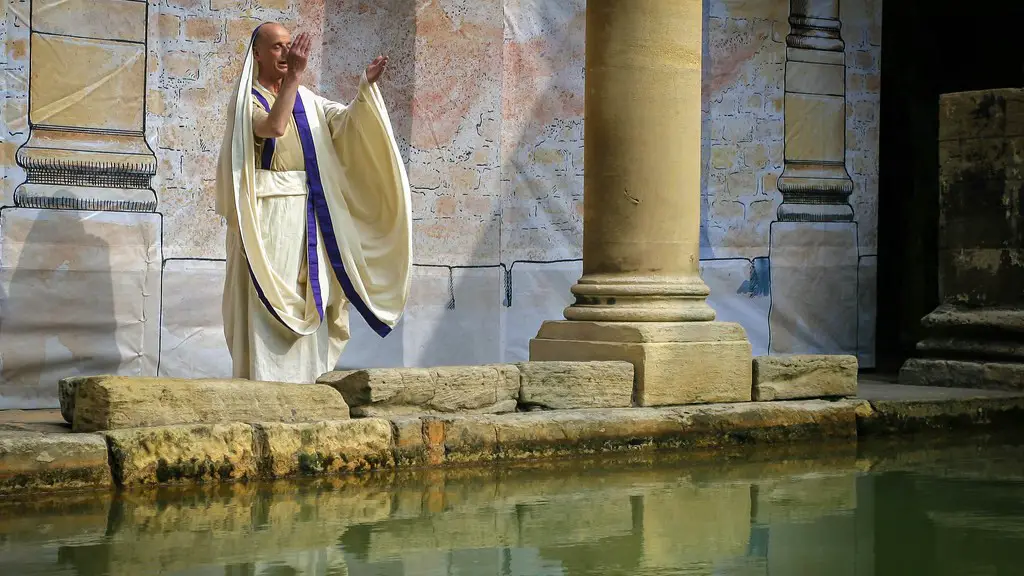The city of Rome is situated on the Tiber River in central Italy. In antiquity, the river was used to transport goods and people within the city and to its port, Ostia. The Tiber was also used as a source of water for the city. Aqueducts were built to bring water from the surrounding hillsides into Rome, and the river was used to fill public baths and toilets. The ancient Romans also built a system of sewers to remove waste from the city.
The ancient city of Rome was founded on the banks of the Tiber River in central Italy. The river provided a source of fresh water for the growing city, as well as a means of transportation. Over time, the Roman government built a complex system of aqueducts to bring water from distant rivers and springs into the city. This system allowed Rome to thrive and become one of the largest and most powerful cities in the ancient world.
Where did ancient Rome get their water from?
Aqueducts were a vital part of the Roman water system, carrying water from springs, reservoirs, and rivers into the city. The introduction of aqueducts allowed for water from further outside the city to be used, increasing the amount of water available to the Romans.
Aqueducts were a system of channels and bridges used to transport water from a distant source to a city or town. The water was used for public baths, latrines, fountains, and private households. Aqueducts also supplied water for mining operations, milling, farms, and gardens.
How did ancient Romans drink water
Public fountains were an important part of ancient Roman life, serving as the only source of potable water for many people. These fountains were often beautifully adorned and provided a welcome respite from the heat of the day. Today, we can enjoy the same cool, refreshing water from public fountains, but we also have the luxury of indoor plumbing and other sources of clean water. Let us be thankful for this modern convenience and remember the importance of public fountains in the life of ancient Romans.
The aqueducts were a vital part of the Roman water system and allowed for a continuous flow of water to be transported across the landscape. The aqueducts were constructed with a shallow slope in order to maintain a consistent flow of water and were often used to transport water to cities and towns.
Who supplied Rome with water?
It is estimated that the Marcia supplied Rome with 140,700 cubic meters of water per day. This is a significant amount of water, and it is likely that the Marcia was a key factor in the success of the Roman Empire.
The water that comes from the tap in Rome is safe to drink and is always cold because it is constantly running. The supplier, Acea, performs 250,000 controls on the water each year to ensure its quality.
Did Romans boil drinking water?
The Greeks and Romans were very concerned about the quality of their water and took measures to improve it if it did not meet their quality requirements. They used settling tanks, sieves, filters, and boiling to purify their water. These methods were effective in ensuring that the water was safe to drink.
It is interesting to note that the tap water in ancient Rome was contaminated with up to 100 times more lead than the local spring water. This is likely due to the fact that the aqueducts that supplied the tap water were not properly maintained and allowed lead to leach into the water. This is a good reminder that even ancient civilizations were not immune to environmental contamination.
How did the Romans get rid of waste water
The Roman sewage system was a complex system of sewers covered by stones. Waste flushed from the latrines flowed through a central channel into the main sewage system and thence into a nearby river or stream.
The ancient Romans used a combination of settling basins and air exposure to purify their water. The basins were a pool of water where the water would slow down, allowing impurities such as sand to drop out. The water would then be exposed to air, which would help to evaporate any remaining impurities.
How did Romans keep pools clean?
Roman baths were sanitized in a variety of ways. The most common method was to empty and clean the pools periodically. This ensured that any waste or debris was removed from the pool. In addition, the baths often had built-in toilets which recycled bath water to carry away the waste. This helped to keep the water clean and free of contaminants.
Roman camps were built with one side facing a river, in order to provide water for the soldiers and animals. When water was scarce, it was brought in wooden barrels, escorted by armed men.
How did the ancient Romans heat their baths
Hypocausts were used in public baths and were used to force heat into a series of hollow chambers between the ground and the floor. This type of heating system is considered the world’s first central heating system. Pipes were used in the walls to help heat the rooms.
The aqueducts in Rome are some of the most impressive feats of engineering in the ancient world. The Acqua Vergine aqueduct is one of the oldest and most well-preserved aqueducts in Rome. It was built in 19 BC and has been in use ever since. The aqueduct is still in operation today and supplies water to some of Rome’s famous fountains.
How fast did water flow in Roman aqueducts?
The experts agree that the aqueduct was used to transport water from the nearby Lake Nemi to the city of Rome. But they have long debated how much water the ancient engineering feat could have carried.
Now, a new study published in the journal Nature Communications has provided a more accurate estimate of the aqueduct’s water-transporting capabilities.
By analyzing travertine—a type of limestone deposit—that was left on the aqueduct’s interior walls and floor, the researchers calculated a flow rate of 14 cubic meters per second, or between 100,000 and 150,000 cubic meters (25 to 40 million gallons) per day, a number below traditional estimates.
The aqueduct was in use for over 400 years, from its construction in the early first century AD until its demise in the early fifth century. And while its original purpose was to bring water to the people of Rome, the aqueduct was also used to transport fish, wine and even grain.
Although Rome is an incredibly old city, it is still full of fountains with clean, drinkable water. There are two types of fountains in Rome: those fed by aqueducts and those that are not. The majority of people in Ancient Rome got their water from fountains that were fed by aqueducts. These fountains are still present in Rome today and are a great resource for residents and visitors alike.
Why is Rome hotter than New York
While Rome and New York receive the same amount of energy from the sun (being situated at the same latitude), the former experiences a much warmer climate, particularly in the winter months This is due to large variations in the atmospheric flow with longitude, known as “stationary waves”. Stationary waves are caused by the earth’s rotation, with air flowing from west to east. This results in a accumulation of warm air near the equator and cooler air near the poles. As a result, Rome experiences a warmer climate than New York.
If you’re visiting Rome, be prepared for some unpredictable weather! The city averages 8373 mm (33 inches) of rain per year, which is more than London’s 5836 mm (23 inches). Most of the time, it’s just a light drizzle, but there can be major downpours and thunderstorms. So, it’s always a good idea to have an umbrella or raincoat handy.
Conclusion
The Roman aqueducts were a complex and impressive feat of engineering. The city of Rome is built on seven hills, with the Tiber River running through the center. In order to bring water to the homes and public baths on the hills, the ancient Romans built a series of aqueducts – a system of channels and bridges – to transport water from the sources to the city.
The ancient Romans were very ingenious in their methods of getting water. They built aqueducts to bring water from afar, and also constructed reservoirs and cisterns to store water. Additionally, the Romans made use of natural springs and rivers. All of these methods allowed the ancient Romans to have a ready supply of water for their needs.
